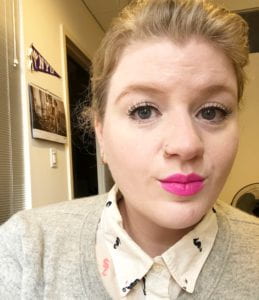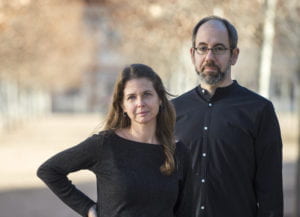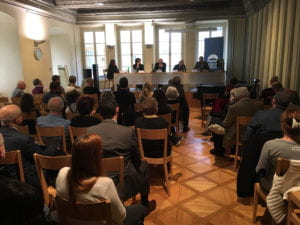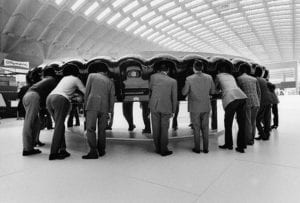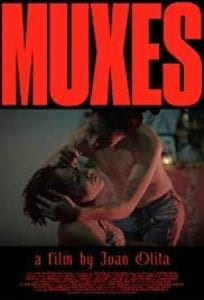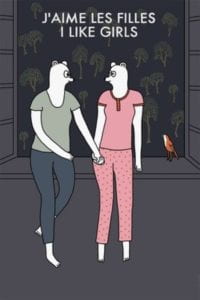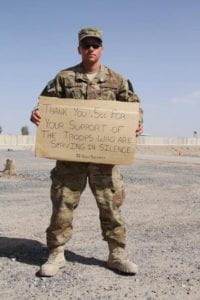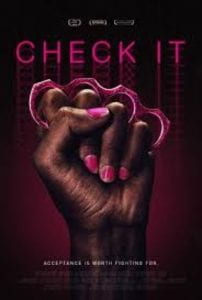Article by Mark Eels of NYU Sydney. Photos courtesy of the U.S. Consulate General Sydney
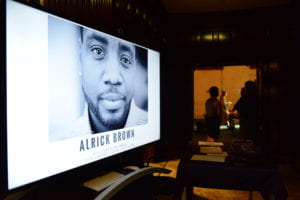 ‘This conversation can be honest. Open and honest always makes for uncomfortable discourse, but as Martin Luther King once said, It’s friction that helps us to grow, without that intellectual and emotional friction inside of us nothing changes.’ And with that NYU Tisch professor Alrick Brown set about delivering a truncated version of what is typically already a packed fourteen week course for eager film students. The topic- ‘Black Image & Film: A Brief History”.
‘This conversation can be honest. Open and honest always makes for uncomfortable discourse, but as Martin Luther King once said, It’s friction that helps us to grow, without that intellectual and emotional friction inside of us nothing changes.’ And with that NYU Tisch professor Alrick Brown set about delivering a truncated version of what is typically already a packed fourteen week course for eager film students. The topic- ‘Black Image & Film: A Brief History”.
Alrick conceded that it was always going to be ‘A Herculean task to talk about the history of Black cinema in 40 minutes or less… There are too many pieces, too many nuances and moving parts for one guy’s perspective’. But for the viewer, Professor Brown was equal to the task.
The event, which coincided with NYU Black History Month, attracted a large audience of students, members of the Benjamin Franklin Club, the U.S Consulate and the broader public. It was also streamed live on the NYU Sydney Facebook page.
At the core of the presentation was the theme of the power of images and how representation in its many forms can be problematic. ‘Racist, stereotypical images are present, even in the earliest films. So as soon as the technology was born people are misrepresented’.
Alrick acted as a steward, navigating the audience through the evolution of the involvement, themes and representation of black people in cinema, especially from a Hollywood perspective. He set the scene with a basic but powerful thought, ‘A lack of representation is problematic; I want you to think about what it means for cultures that don’t see themselves at all on screen. Or should they see themselves, what if the image is not positive? These images shape how we see the world. It’s a conversation of representation and we don’t have it enough’.
Brown interlaced a pertinent mix of supplementary clips, along with a continual return to content from ‘Classified X’, a film created from one of his mentors, Melvin Van Peebles. Some content was so blatant in its racism that it risked making the audience uncomfortable at times, echoing his initial remarks on the importance of friction. But Alrick pushed the audience to confront their own feelings and interpretations, ‘Should I be angry, or as a director and story teller do I try to understand where people’s’ ignorance and prejudice comes from?’
The lecture was successful in traversing between periods with sufficient salient examples and room for discussion. Behind these movements, he explained lay ‘A kind of intersection of art, technology but also the time we are living in’.
The presentation seamlessly moved from discussion of the birth of love for cinema to the current social climate. All starting with those moments where people realised a ‘Complete enamour with moving images’, how, ‘cutting two images together changed us forever, cutting back and forth between something like a woman and a fire to create suspense’.
And so, said Alrick, in 1903 you have these innovations but you also have a very racist society. Giving birth to one of the first ever blockbusters, ‘Birth of a Nation’, originally titled, ‘The Clansman’.
Alrick moved on to the interwar period, noting a shortage of new black filmmakers trying to create a space and have a voice. But alas, as he points out heroes inevitably were lighter skinned. And so, as his mentor Melvin Van Peebles argues, ‘The so called golden era of independent black film is a myth… The real history has been one of struggle… sacrifices to bring a few precious moments of black humanity to the silver screen… All that wonderful talent wasted’. ‘The only ray of hope was Sam. You remember the piano player in Casablanca? It was the first time I’d seen a black actor go through an entire film without having to kiss ass.’
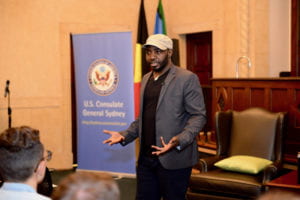 It was clips like these that elucidated the often neglected or forgotten stereotypes enforced by the hands of Hollywood. Films an audience member like myself might have seen many times, on their own less obvious in their representation, but strung together and seen as a collection, stark in racism.
It was clips like these that elucidated the often neglected or forgotten stereotypes enforced by the hands of Hollywood. Films an audience member like myself might have seen many times, on their own less obvious in their representation, but strung together and seen as a collection, stark in racism.
Moving to the post war period Brown introduced the new black character, one more multidimensional in nature. Why, he asks? ‘Black people are consumers, so Hollywood caught on. There was a need for a token character or a sidekick to open the market’. Behind this, though he argues always rested the sympathetic white character, ‘Even after these adjustments there were always rules’.
Brown then showed a clip from ‘Guess Who’s Coming to Dinner’, Hollywood’s push to a more ‘liberal’ lense through interracial relations. ‘The problem though is that if you understand Sidney Poitier’s character in the film, he had just won a Nobel Prize, but the white girl did nothing. But according to the meter in Hollywood they were evenly matched. She was white.’
Alrick then moved on to the realisation of the Black power movement in the 1960s and the acceptance of the need to ‘let people in’. And so, he stated, Hollywood had to let people in, a select few tasked with making movies, directors such as Ossie, Melvin, Gordon, all given budgets. From this stemmed the ‘Blacksploitation’ movement, which was good for employment at the time but there was still an imbalance in roles. Eventually scripts got weaker and it all began to taper out.
The irony, he noted, is that ‘There’s something happening where some of the success that the people are experiencing is a direct result of the lack of success in the criminal justice system’. And with this came the post 1975 movement and the glorification of drugs and their agents of circulation.
And so, in circular fashion we arrived back to Professor Brown’s central theme for the evening ‘No representation- some representation – distorted representation’.
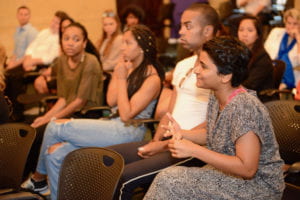 So where does Alrick leave us, after some confrontational material and realisations? A combination of personal anecdote, his first short film project ‘Familiar Fruits’ and a message of the importance of not shying away from what he calls friction.
So where does Alrick leave us, after some confrontational material and realisations? A combination of personal anecdote, his first short film project ‘Familiar Fruits’ and a message of the importance of not shying away from what he calls friction.
He explained his pathway to NYU Tisch School of the Arts, via immigrating from Jamaica to New Jersey, living in the crack epidemic of the 1980s, watching footage from the likes of Spike Lee and John Singleton.
‘I was watching them from a distance, I would run home and watch TV, that was my protection, that’s how I escaped’. ‘Some teachers saw something in me and encouraged me to write. I started understanding my world a little bit. Writing was the one place I felt at home. I often say to my students it’s the great equaliser. No matter how much a movie costs, paper and pencil is still free. And you can put pen to paper and you can create just about anything. ‘
Closing his presentation he revealed the moment he realised his passion for film. Walking in Ghana between two villages beginning to doubt his arrival at his destination. ‘I started to write a message to my mother and brother… If I would live what would that one thing be to make my life meaningful? It was film. Everything became clear in that moment’.
And so he applied to film school. That year he was one of 36 accepted from a pool of applicants 1000 strong. The title of his application essay? ‘Death on Graduation Day’. ‘If I die after studying film for three years, I’d be OK. I would have done something I loved.’
Some years have passed since Professor Brown’s graduation. And for NYU Sydney students and those in attendance this was certainly something to celebrate.






